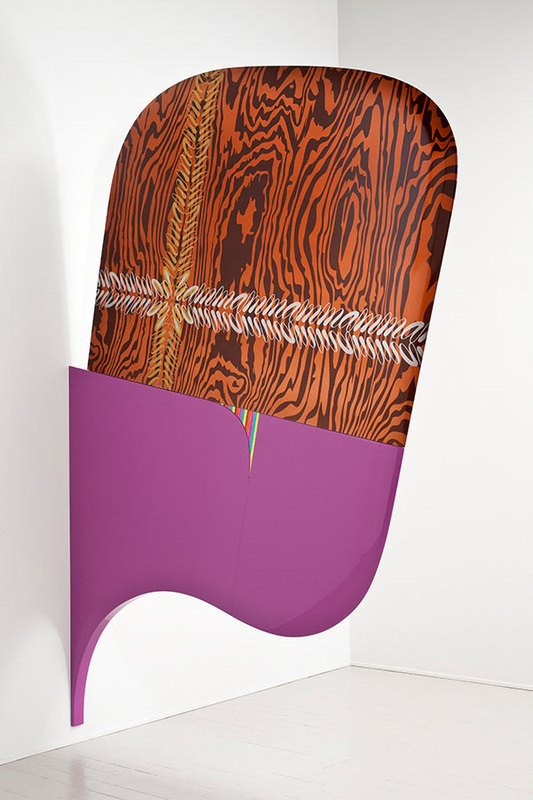| Heather McGill Oblique Angle For the past decade I have lived and worked in the suburban outskirts of Detroit, a city that exists as a monument to the successes and failures of twentieth-century production. The city’s industrial heritage-the resonant spirit of Fordist innovation and technological promise, continues to inform my sculpture. In Detroit, I was easily seduced by the glittering intrigue of auto detailing and the fetishization of fine tuned form. I learned to paint as an apprentice in a collision shop in the heart of the city; these skills have evolved into a series of sculpture that applies the media of industry to the mantras of modernity. This particular series of work derives its shape from the schemata of a toy model with a 1:72 scale ratio of an actual American space station. Each sculptural element represents a different view of the model as the object rotates in space-a perspective only possible through the flattened, abstract renderings of diagrams and blueprints. This series expands the scale of a miniaturized plaything, reimbuing the sculpture with the monumental sensibility that was lost in the translation between space station and toy. The visual language borrows from both art and industry, bringing together tropes from minimalist sculpture and pop-modern design. The luminous, highly ornamental surface renders the same seduction that attracts young boys to toy jets and grown men to custom hotrods. The sculptures share the systematic use of pattern, specifically hounds tooth, plaid and wood grain. The spectrum of patterning is abstracted to the point of pure self-referentiality. For example the faux-wood grain pattern references the simulacrum of wood, aligning closer to products such as Formica, rather than actual wood. It belongs to the world of appearances, an imitation of the imitated, and a further removal from the organic. The plaid is used as a device to anchor or allow a mapping of the fractured physical surface, not to signify heritage or lineage. Specific sections on the pieces are sprayed with interference paints, which were developed in the 1960s for their ability to create color-shifting illusions triggered by movement and light. The aligning of ones body in a fixed position renders nothing more than a monochrome surface. These paints are activated by the oblique angle, of viewer to object, suggesting a shifting of our perceptual reality. We experience the oblique angle engaged anew as viewers are positioned as participants in the work, activating the semiological system that abstracts and reimagines the texture of fetish and the production of desire. - from heathermcgill.com |
